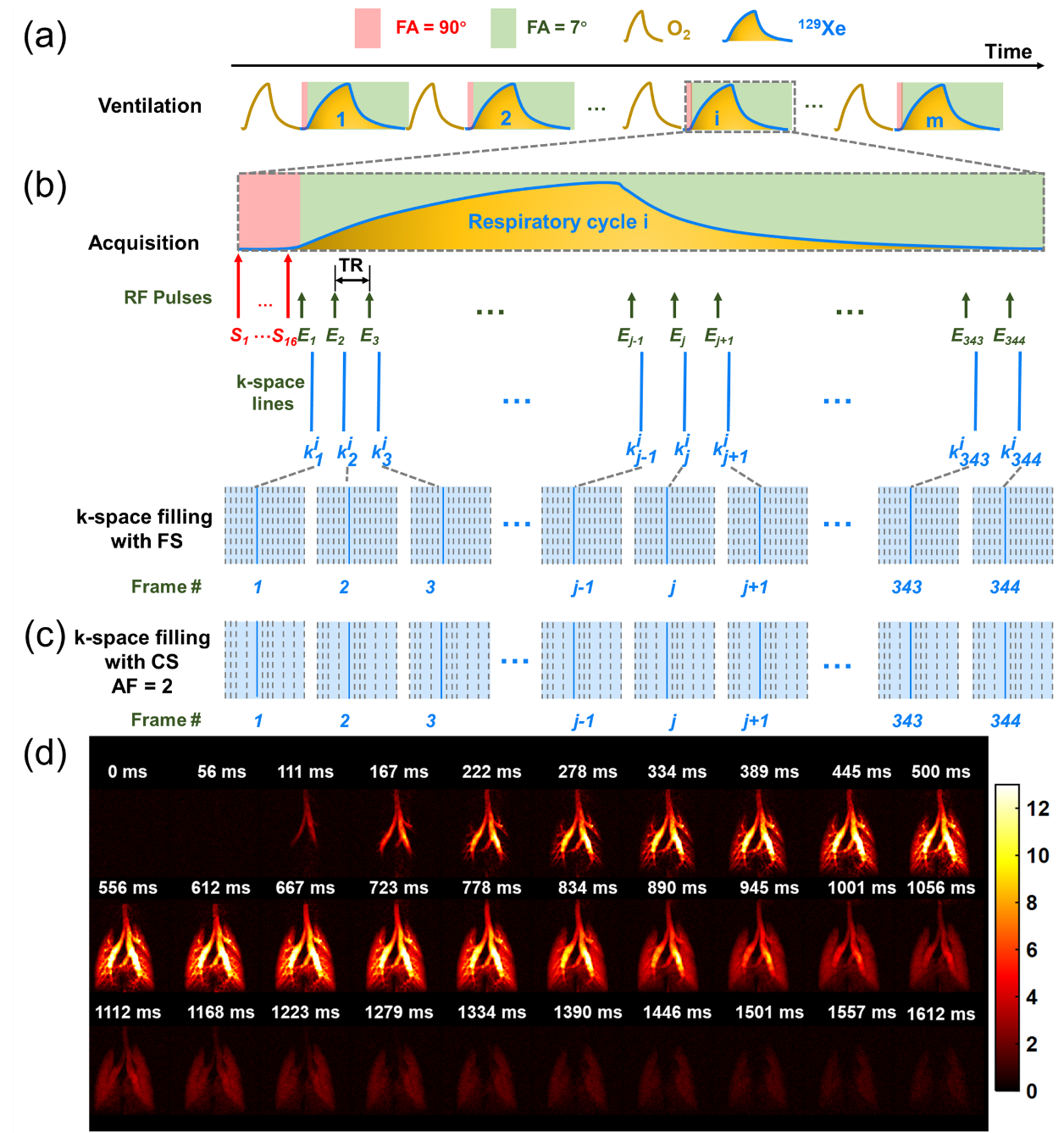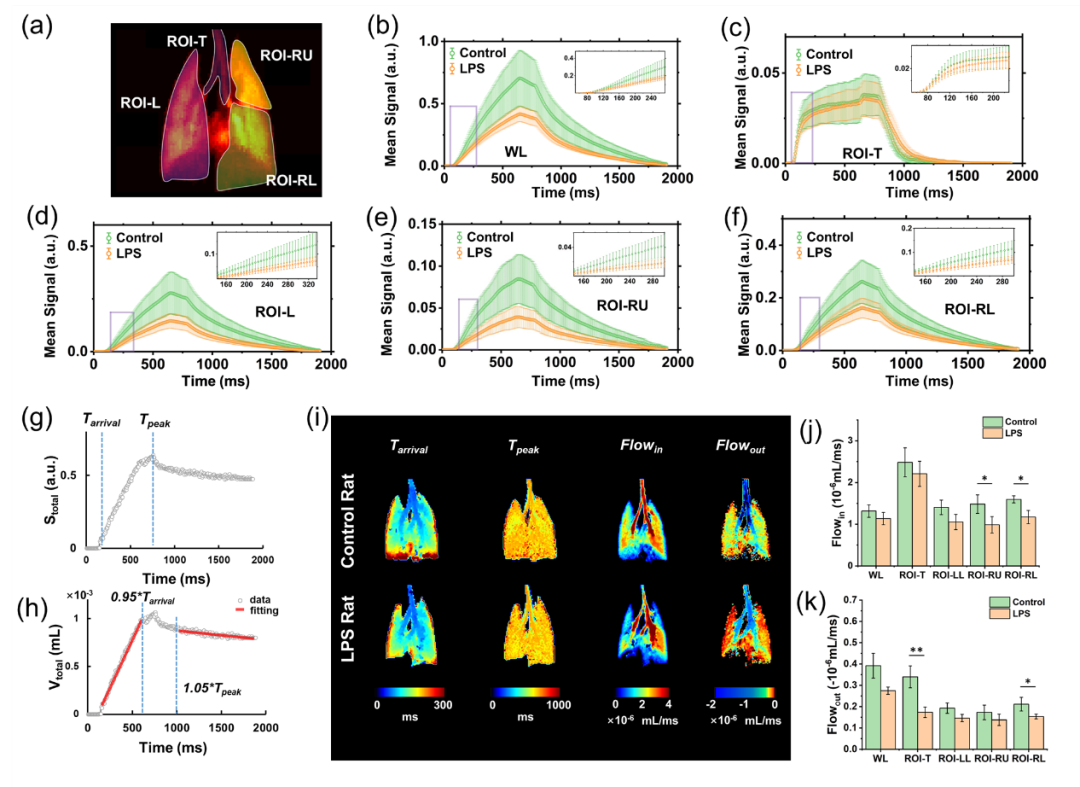

Science Bulletin | Researchers from the Ultrasensitive Magnetic Resonance Research Group Propose a Novel Method for High Spatio-Temporal Resolution Pulmonary Dynamic Ventilation Imaging
Recently, the research team led by Dr. Xin Zhou at the Innovation Academy for Precision Measurement Science and Technology, Chinese Academy of Sciences (CAS) published a research brief in Science Bulletin, titled “Dynamic ventilation functional MRI of the lung with sub-millimeter spatial resolution and millisecond temporal resolution.” This study introduces a novel dynamic ventilation imaging method based on hyperpolarized 129Xe gas magnetic resonance imaging (MRI), achieving sub-millimeter spatial resolution (0.5 mm) and millisecond temporal resolution (5.6 ms). The method enables non-invasive and quantitative evaluation of pulmonary ventilation throughout the entire respiratory cycle, paving the way for precise diagnosis and treatment of respiratory diseases such as chronic obstructive pulmonary disease (COPD) and asthma.
Pathological changes such as pulmonary inflammation, fibrosis, and edema impair ventilation, yet clinical assessment remains confined to global pulmonary function tests (PFTs). Although hyper-polarized gas MRI can localize ventilation defects, its limited spatial and temporal resolution hampers early-stage disease evaluation and preclinical studies. To address this gap, the team devised a dynamic ventilation imaging approach (Fig. 1a–c) that delivers lung images with 0.5 mm spatial resolution and 5.6 ms temporal resolution, enabling visual, quantitative tracking of intrapulmonary gas dynamics throughout the entire breathing cycle (Fig. 1d).
The core principle of this method lies in enhancing the spatiotemporal resolution of dynamic hyperpolarized 129Xe ventilation imaging through multiple-breath acquisition and a k-space line sampling strategy. In conventional dynamic imaging, the temporal resolution is determined by the product of the number of phase encoding steps (N) and the repetition time (TR), i.e., N × TR. Since pulmonary ventilation is a periodic process, the team leveraged this periodicity by acquiring the same k-space phase-encoding line repeatedly during each breathing cycle (a strategy known as k-space line sampling), with different phase encodings collected across breaths until the full k-space is sampled. As a result, the proposed method achieves a temporal resolution equal to TR, representing an N-fold improvement over conventional approaches.

Fig.1. Schematic illustration of the ventilation process, data acquisition, and k-space line filling strategy for dynamic ventilation imaging.
Using this technique, the research team validated their approach in a lipopolysaccharide (LPS)-induced animal model of lung injury. The dynamic ventilation signal–time curves in LPS-treated rats showed a marked reduction and exhibited regional heterogeneity (Fig. 2a–f). Building on this, the team developed a set of quantitative parameters for dynamic ventilation analysis, including gas arrival time (Tarrival), time to signal peak (Tpeak), inhalation rate (Flowin), and exhalation rate (Flowout) (Fig. 2g–i). Results revealed significant inter-lobar heterogeneity in ventilation dynamics among LPS-treated rats, with some lobes showing significantly lower ventilation rates than those in control animals (P < 0.05). Overall, this study presents a novel high spatio-temporal resolution method for dynamic ventilation imaging, offering a promising tool for the early diagnosis of chronic pulmonary diseases.

Fig.2. MRI signal–time curves of intra-pulmonary gas; representative maps of dynamic ventilation feature times and gas flow rates, along with inter-group comparisons.
Dr. Hongchuang Li (Postdoctoral Fellow) and Dr. Haidong Li (Researcher) from the Innovation Academy for Precision Measurement Science and Technology, CAS, along with Prof. Li Fan, Deputy Director of the Department of Radiology at the Second Affiliated Hospital of Naval Medical University (Shanghai Changzheng Hospital), are co-first authors of the paper. Dr. Xin Zhou, Researcher at the Innovation Academy for Precision Measurement Science and Technology, CAS, is the corresponding author. This work was supported by the National Natural Science Foundation of China, the Chinese Academy of Sciences, and the Natural Science Foundation of Hubei Province, among others.
Link: https://mp.weixin.qq.com/s/BW545ve8TzX6CLl3evGcuQ

Innovation Academy for Precision Measurement Science and Technology, CAS.
West No.30 Xiao Hong Shan, Wuhan 430071 China
Tel:+86-27-8719-8631 Fax:+86-27-8719-9291
Email:hanyeqing@wipm.ac.cn
鄂ICP备15017570号-1